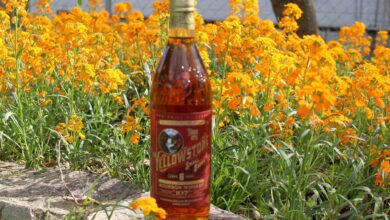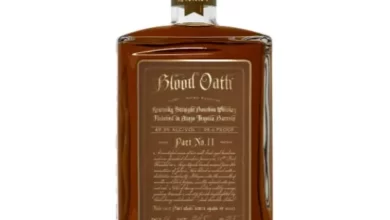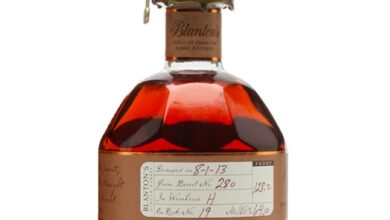A Brief History Of Alcohol And Alcoholic Beverages

The consumption of alcoholic beverages spans nearly all cultures and epochs, marking its significance not just as a leisure activity but also as a pivotal element of social and economic structures. From ancient rituals to modern-day celebrations, alcohol has played a diverse role in society. This article explores the rich tapestry of history behind alcohol and alcoholic beverages, detailing how they have influenced and been shaped by human civilization. As we delve into the origins, ancient uses, and cultural significance, we also touch on the transformations that have enabled these beverages to remain a steadfast component in human interaction and commerce.
Origins of Alcohol Consumption
The journey of alcoholic beverages began in the Neolithic period, around 10,000 BC, when the first known fermentation practices were established. Archaeological discoveries suggest that the earliest societies had stumbled upon the fermentation process by chance, possibly through the natural fermentation of fruit or honey left unattended. These primordial brews were not only consumed for their intoxicating effects but often served medicinal or ceremonial purposes, weaving alcohol firmly into the cultural fabric of these communities.
As civilizations advanced, so too did the techniques for producing alcohol. In ancient Mesopotamia, the Sumerians refined the brewing of beer, regarding it as a gift from the gods—a sentiment echoed in their religious texts and hymns. It was in these contexts that the integration of alcohol into daily life became evident, highlighting its significance beyond mere sustenance. For students studying these ancient practices there are resources that offer insights into how these early alcoholic beverages could have played a role in health and medicine at the time. They let you, for example, buy nursing essay at PaperWriter or any other kind to understand alcohol’s antiseptic and therapeutic properties.
Meanwhile, in Egypt, the brewing of beer was a state-controlled industry, with pharaohs using it as a means to pay workers who constructed the great pyramids. This not only underscores the economic importance of alcohol but also its role in sustaining large labor forces engaged in monumental architectural endeavors. Egyptian nobility often consumed wine, which was considered more sophisticated, highlighting early instances of alcoholic beverages as status symbols.
Alcohol in Ancient Civilizations
As we shift our gaze from the Near East to the Mediterranean and the Far East, the story of alcohol continues to diversify. The Greeks inherited much of their wine-making knowledge from the Egyptians and Phoenicians, elevating it with their own cultural practices. Wine was a central feature of Greek social settings, epitomized by the symposium, a gathering where philosophy, politics, and literature were discussed over copious amounts of wine. This tradition illustrates the social lubricant role of alcohol, facilitating dialogue and intellectual exchange.
In ancient Rome, wine was so integral to daily life that it was considered a necessity alongside bread. The Romans were prolific wine producers and are credited with developing sophisticated viticulture techniques, spreading their methods throughout their vast empire. Roman influences are evident in today’s wine cultures of Italy, France, and Spain, highlighting a legacy that extends far beyond their conquered territories.
Further east, in ancient China, alcohol was a prominent component of state rituals and family ancestors’ worship. Rice wine, known as huangjiu, played a significant role in these ceremonies, symbolizing purification and bonding. The Chinese also pioneered the use of alcohol as a medicinal solvent, a practice that would much later influence global medicinal techniques.
The Spread of Alcoholic Beverages Along Trade Routes
The Silk Road and other ancient trade networks played a crucial role in the dissemination of alcoholic beverages and the techniques used to produce them across continents. This spread was not merely a transfer of goods but also an exchange of cultural practices, agricultural methods, and technological innovations. As traders moved from the vineyards of Europe to the rice fields of Asia, they carried with them the secrets of wine, beer, and spirits, influencing local customs and tastes.
During the Islamic Golden Age, although alcohol consumption was generally prohibited due to religious constraints, Muslim chemists like Al-Kindi and Al-Razi refined the art of distillation, originally aimed at producing perfumes and medicines. This technique, however, quickly spread to the Christian monasteries of Europe, where it was adapted to distill spirits. Spirits such as brandy and whiskey began to emerge, providing a longer-lasting and more transportable alternative to beer and wine. This innovation was vital during the Age of Exploration, where distilled spirits played a crucial role in the long sea voyages of European explorers.
The influence of alcohol spread as far as the New World with the arrival of European settlers. Local ingredients were utilized to create distinctive new alcoholic beverages. For example, rum, distilled from sugarcane, became associated with the Caribbean, while in North America, settlers produced hard cider and later bourbon, using the abundant local apples and corn.

Innovation and Regulation in the Modern Era
The Industrial Revolution marked a significant turning point in the production of alcoholic beverages. Advances in technology not only increased production capacities but also improved the consistency and safety of alcohol production. The advent of steam power and, later, electricity enabled mass production, particularly in brewing and distilling, making alcoholic beverages more accessible to the general public.
However, with increased production came problems such as alcohol abuse and the social issues that accompanied it, prompting governments to take action. In the United States, this culminated in the Prohibition era from 1920 to 1933, an ambitious government initiative to ban alcohol sales and consumption. Although well-intentioned, Prohibition led to a rise in organized crime associated with the illegal production and distribution of alcohol. The failure of Prohibition highlighted the complexities of regulating substances deeply embedded in social and economic systems, leading to its repeal and the subsequent establishment of controlled regulation and distribution systems.
In contemporary times, the regulation of alcohol remains a complex issue, with laws varying significantly by country and region, reflecting differing cultural attitudes towards drinking. These regulations often balance the promotion of health and safety with the recognition of alcohol as an important economic commodity, contributing significantly to national economies through taxation and tourism.
Conclusion
Alcohol’s journey through human history is as complex as it is long. From its origins in ancient fermentation to its status as a staple of social life and a significant economic driver, alcoholic beverages have shaped and been shaped by the cultures they have touched. Today, they remain a global commodity, implicated in both celebration and controversy.
The future of alcohol consumption and regulation will likely continue to evolve in response to social, economic, and technological changes. As societies grapple with the health impacts of alcohol and continue to innovate in production techniques, the history of alcohol will undoubtedly accrue more chapters, reflecting its enduring relevance in human society. This intricate dance between cultural tradition and modern regulation defines alcohol’s dual role as both a cherished heritage and a challenge to public health, ensuring its place in both historical and contemporary discourse.



